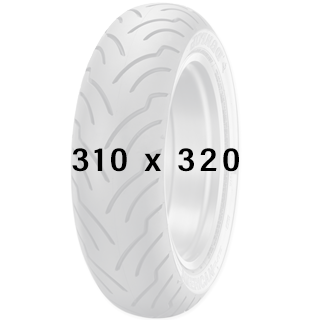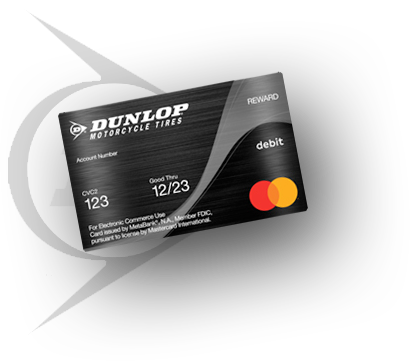How to Prepare for and Get a Motorcycle License
There are over 8.3 million registered motorcycles in the USA. With cruisers and tourers being the favorite style of bike, it’s not surprising, though, that California and Florida are way ahead regarding motorcycles per head of population.
Are you itching to get in the saddle but don’t know where to start? Or are you unsure of what’s involved in getting a motorcycle license?
Every state has its individual rules and regulations for anyone wanting to obtain a motorcycle license. Yet, the basic premise is the same nationwide. It involves three steps. One non-negotiable common denominator applies; when operating a 2 wheel motorcycle on the road, you must have a motorcycle license or endorsement.
Obtaining a motorcycle license can be done in two different ways, and these are:
Option 1: Traditional Process
Step 1: Prepare for and pass a written test
Step 2: Participate in supervised riding practice
Step 3: Apply for and take your motorcycle permit skills test
Option 2: MSF Course
The Motorcycle Safety Foundation (MSF) offers a course that teaches you how to ride a motorcycle and includes the DMV riding portion test. This is a popular option for those who are new to motorcycling or who want to improve their riding skills. Upon completing the course, you will be given a completion card that allows you to skip the DMV riding portion test and obtain your motorcycle license.
Regardless of which option you choose, one non-negotiable common denominator applies: when operating a motorcycle on the road, you must have a motorcycle license or endorsement. It’s important to check with your state’s Department of Motor Vehicles (DMV) for specific requirements and regulations
Let’s look at these in more detail.
Step 1. Written Test
Before you’re let loose on two wheels, most states insist you pass a written test. The questions will test your knowledge of basic motorcycle maneuvering, road rules, bike terminology, safety practices, and state laws. Once you pass the written test, you’ll be issued a motorcycle permit.
Most states require you to take your Road Skills Test within a year of getting your permit or it will expire. So, it’s important to start practicing and preparing for the riding portion of the test as soon as possible.
There are two ways to take the Road Skills Test. You can either take the test through the DMV or a Motorcycle Safety Foundation (MSF) course. Some states may require you to take the MSF course, while others may offer it as an option.
Top Tip
The test does not include any trick questions. Always check out your state Department of Motor Vehicles (DMV) resource pages. You can find all the answers you need to pass with flying colors here. You’ll receive a motorcycle learner’s permit when you pass the test.
Step 2. Practice
With the theory in the rearview mirror, it’s time to take to the road for some real-world practice. Once again, the details may change from state to state. If you’re over 18, you may not need to log any supervised hours and can practice on your own until you feel comfortable and confident enough to take the road skills test. However, some states have restrictions on where and when you can ride during this period, such as not being allowed on highways or riding only during daylight hours. Make sure to check your state’s specific rules and regulations before hitting the road.
Top Tip
Find out if your state requires insurance; most do. Also, as learning requirements differ from state to state, check with your local DMV.
Step 3. Road Skills Test
The final piece of the jigsaw is the road skills test. Examiners can’t ride a pillion, so this part of the test usually takes place on a closed course or circuit. The examiner will observe your skills of stopping at normal speed and quickly, turning from a stop (as in a junction), and negotiating obstacles (swerving around cones).
Top Tip
Some states also require an observed on-road part to the test. For example, this section may mean the examiner follows you on their motorcycle. Alternatively, you may need to supply a licensed vehicle and operator for the examiner’s use. Additionally, it’s important to note that the majority of the skills test focuses on slow-speed maneuverings, such as U-turns, figure-eights, and emergency stops. Knowing what skills to practice can help you feel more prepared for the test.
If you arrive to take part in the road skills test without the correct documentation and requirements, it’s an instant fail, so go prepared.
Different License Requirements
Under 18: Always check with the relevant state, but in most cases, you will need a motorcycle permit before you can apply for a motorcycle license.
Over 18: Depending on your circumstances, you may be able to skip the permit and go straight for a motorcycle license or an endorsement of your existing (car) license.
Exceptions: If you’re an experienced driver with a motorcycle permit, you may be able to skip parts of the motorcycle license testing if you have completed a motorcycle skills course.
The secret weapon: Although not compulsory in most states, a third-party motorcycle skills course is the secret weapon. It will help you pass the test and become a better rider. Held over 2-4 days, skilled motorcycle riding examiners will put you through your paces. They can provide valuable feedback on your riding technique, as well as teach you advanced maneuvers and emergency procedures.
Some courses even provide the motorcycle and equipment you need to take the course, so you don’t have to worry about finding a bike. In some states, a recognized skills course may waive the need for an observed road test, saving you time and hassle. It could also lead to cheaper insurance premiums, as some insurance companies offer discounts for completing a recognized skills course.
As mentioned before, most states will have slightly different rules and regulations on obtaining a motorcycle permit, license, or endorsement. If in doubt, consult your state DMV. Everything you need to know is right there.
Motorcycles are the last of the great freedom machines. So, by learning how to ride safely, you’ll be ready to begin your two-wheel adventure. Enjoy the ride.









